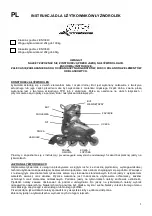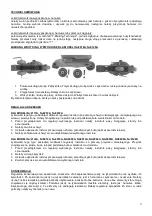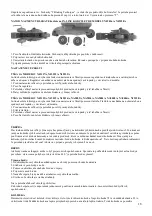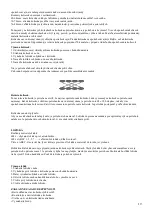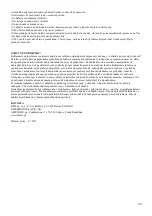
5
EN
IN-LINE SKATES USERS' MANUAL
Class A according to EN13843
Weight of user - 20kgs to 100kgs
Class B according to EN13843
Weight of user - 20kgs do 60kgs
ATTENTION!!!
THE MANUAL MUST BE READ CAREFULLY AND UNDERSTOOD BEFORE USING THE IN-LINE SKATES.
KEEP THE MANUAL FOR FURTHER REFERENCE.
IT IS SUGGESTED TO USE SAFETY HELMET AND WRIST, ELBOW AND KNEE PROTECTORS.
THE IN-LINE SKATES’ DESIGN
The in-line skates consist of two elements: the boot and the lower part. The boot can be made of plastic entirely or
have its front part made of soft material. The lower part, called chassis is made of TPR plastic or aluminum. The
wheels are mounted to bearings, which are fixed to the chassis with bolts and self-locking nuts.
Read the manual and remember the basic rules of safe skating using in-line skates.
SKATING USING IN-LINE SKATES
Using in-line skates, due to constant moving at considerable speed, requires appropriate technique of use, which
provides safety for skater and the persons in their vicinity. Because of the recreational purpose of in-line skates, it
is suggested to use standard skating techniques without any evolutions or jumps. It is highly recommended to use
safety pads , helmets and reflective elements. The skater must always be cautious during skating and adjust the
speed to the level of their skills. Appropriate surface is crucial – it must be smooth, clean and dry. The slope terrain
and slippy, dusty, stony, wet ground should be avoided.
Before skating using in-line skates ensure that all bolts are tightened.
We recommend using in-line skates in places assigned for that purpose.
WHEELS AND
BEARINGS
AXIS
BOLT
INNER
BOOT
BUCKLE
CHASSIS
BRAKE
CUFF
BOOT
BUTTON
HOLES

